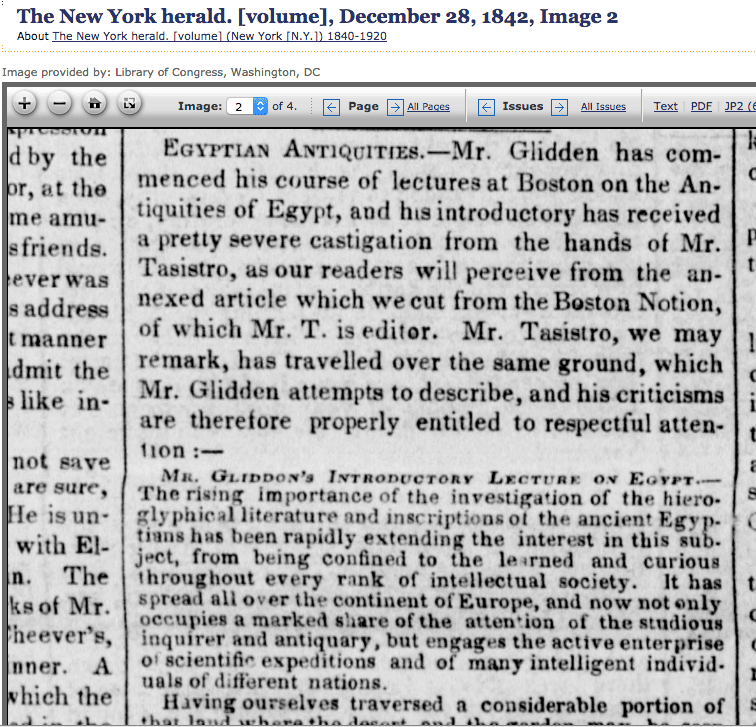In the embedded Pixetell video presentation below, I give share my experience in learning a little about the ancient roots of the LDS temple by reading the works of two non-LDS scholars. They may not have known much about the LDS temple, but what they discovered and shared forever changed my appreciation of the Temple and the Restoration.
Click on the full-screen icon to view this in a larger format, or view this presentation in a separate browser window.










Very good presentation, Jeff. I especially like your promotion of Judgment and Justification in Judaism and the Apostle Paul, which is a wonderful text showing that Paul did view works as meritorious, and that they will determine, not merely one's eternal rewards, but one's eternal *destiny*
Wonderful presentation! Thank you for posting it Jeff!
Thanks, Robert. Judgment and Justification is a controversial text, but seems to be one worth considering. Based on my superficial glance so far, it may understate the role of grace, but there is some serious scholarship to ponder. Certainly worth exploring, though, to better understand covenants in biblical times.
Hi, Tianna! Thanks for dropping by.
Here's a review of Judgment and Justification from the Biblia Theologica Blog.
While VanLandingham may seem to undercut grace at times, it is due to his volume being a critique of the works Sanders and others who promote the New Perspective on Paul (NPP), such as NT Wright and their approach to the grace element of salvation in both Second Temple Jewish literature and Paul's writings. I am in agreement with most of the NPP exegesis of passages like Ephesians 1 and texts like Romans 4; 8, 9-11 which have been abused by those who follower the Reformers, though VanLandingham's volume did show some flawed exegesis of some Second Temple and Pauline texts by proponents of the NPP.
The book is simply a must-read, and the chapter dealing with dikai-word groups in the LXX and Greek NT is worth the price of the volume alone (Kinnda obvious I am a huge fan of the book, eh? 😉
FWIW,
Robert B.
Jeff,
I thought you gave a solid presentation. Of course, I don't agree with you regarding the need for a temple. We are God's temple, and He dwells in us and not in buildings made by man. As far as covenants go, I agree that we are a covenant people, but that THE COVENANT is Jesus Christ Himself, not the types of things that are viewed as covenants in the LDS temple ritual. The sign of the New Covenant is baptism and, just like circumcision didn't save anyone, neither does baptism. Regarding obedience and works: yes, a covenant people will be obedient and bring forth works. I just happen to see it in the context of response and not "have to or else." Works also serve to show our faith in Jesus Christ, and I believe the Bible is simple enough in teaching that we are justified by our faith. I have to disagree with Robert Boylan that Paul viewed works as meretorious. Could one argue for authenticity of conversion to Jesus Christ as one of the reasons for works? Regarding judgment…we are all worthy of death. But, in the eternal court room scene that will play out, those who believe in Jesus Christ as Messiah will be judged righteous because of Christ's righteousness. Regarding grace, it is a beautiful gift we experience our entire lives. I'm basking in that grace right now. It's truly amazing. So, I really struggle to see grace as anything other than a gift without strings attached. Oh, one more thing, there is such a thing as unconditional covenants. The Noachich covenant is a great example where God promises to do something without any requirements of humanity.
Thanks for your thoughts, Jeff. And, again, you did a great job of presenting your view.
Peace and Blessings
Thanks, JackG. Appreciate the comments and the various perspectives you share.
"I don't agree with you regarding the need for a temple. We are God's temple, and He dwells in us and not in buildings made by man."
There are three different types of temples described in scripture. One, the one you speak of, is the Telestial temple – our body. That is where the Holy Ghost can dwell within us as a spirit to give us direction through revelation.
The second, the Terrestrial temple, which was had by the ancient Hebrews and also by Latter-Day Saints. These were and are presided over by Jehovah, Jesus Christ. Each is a point in which we can leave the Telestial world and re-enter a place that is not quite heaven, not quite earth, where we learn how to leave the one level and enter the higher.
In the Revelation of John, it shows the third type of temple, the Celestial Temple where God the Father rules and reigns over the universe. This is where Christ sits on the throne with him having inherited all that the Father has and where we will become co-inheritors with Christ.
The first and the last are physical places. Why wouldn't the middle?
You mentioned a talk about Elder Oaks – sacrament / temple – do you have a reference to the year of the talk, or even better a link?!
Thanks.
A very slick presentation. I'd like to see more of this format on your blog. Thanks for the resources and tying it all together. Sometimes, we LDS don't appreciate what we have and what we can share with others.
Hawkeye,
Before we can continue in this discussion, are we talking about the LDS Temple as similar in function and purpose as the Jewish temple that was destroyed by God at the time of Jesus' death? Or, is it something totally different?
Blessings…
The links for this video are down. What two books were discussed?